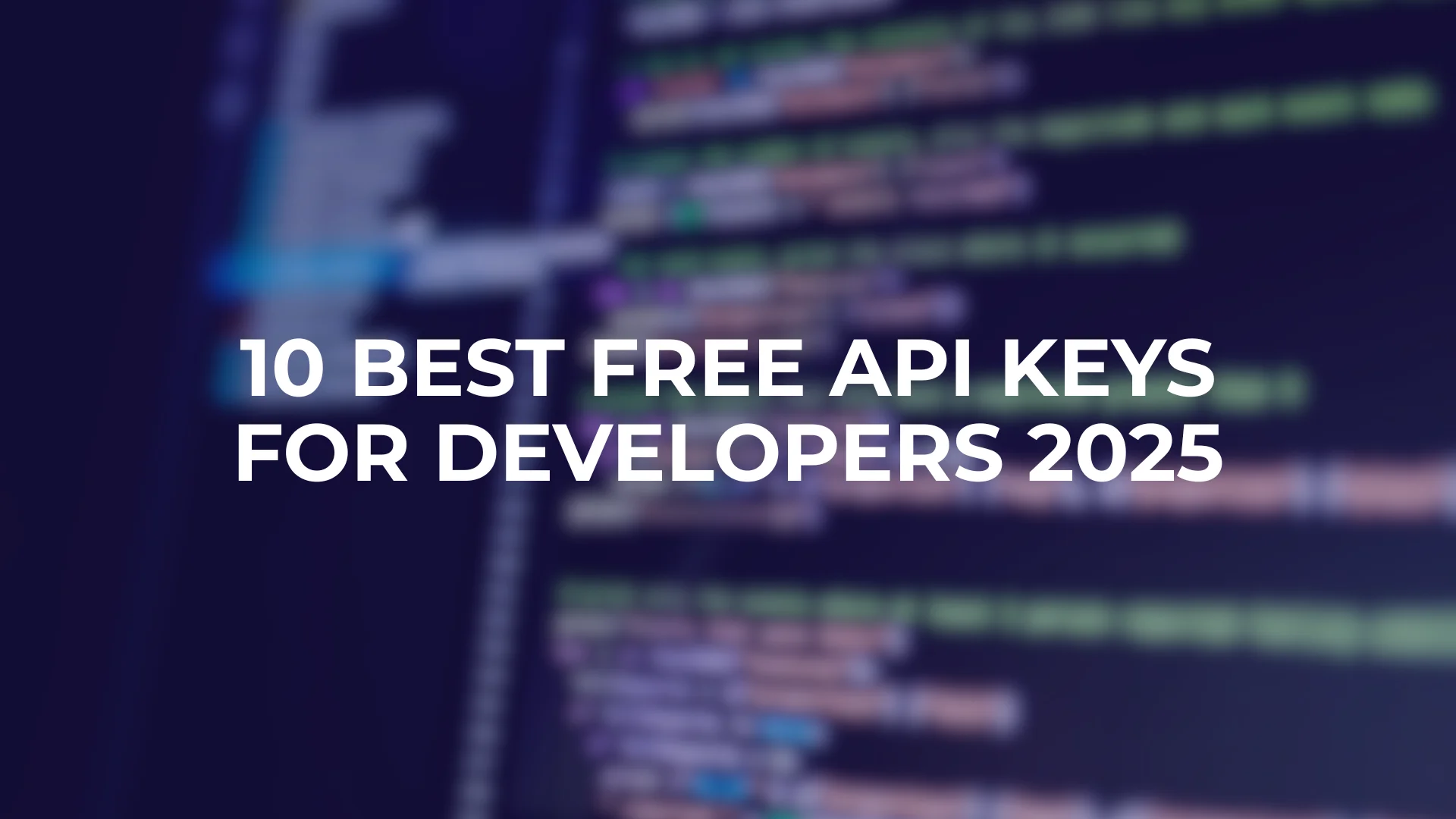Building AI applications shouldn’t break your budget, but let’s be honest, it often does.
I’ve watched my OpenAI bills climb month after month as my projects grew, which led me down a rabbit hole of discovering free API keys alternatives. What I found surprised me….
The landscape has evolved dramatically. We’re not talking about toy APIs with restrictive limits anymore.
Some of these free services offer enterprise-grade performance with generous quotas that can power serious applications.
I’ve spent the last six months testing dozens of providers, building real projects, and dealing with the inevitable quirks that come with free services.
This guide covers the 10 best free AI API providers I’ve discovered in 2025. These aren’t theoretical recommendations, I’ve used each service extensively, built applications with them, and can tell you exactly what works and what doesn’t.
Some offer completely free access to powerful models, others provide substantial trial credits, and a few have such generous free tiers you might never need to upgrade.
What makes this different is the developer perspective. I’ll share the hidden gotchas, actual performance differences, and which services are reliable enough for production use.
By the end, you’ll know exactly which free API fits your specific needs.
What You Need to Know
Before diving into specific providers, let’s clarify what you’re actually getting with free AI APIs. Understanding these nuances will save you headaches later.
Free vs Trial Credits
There are two types of free offerings. True free tiers provide ongoing access with limitations like rate limits or token caps that reset monthly.
Trial credits give you a one-time budget to spend however you want, but once it’s gone, you’re done unless you add payment information.
I’ve found truly free services better for long-term experimentation and learning, while trial credit services excel for testing specific models or running short-term projects.
The smart approach is using both strategically.
Rate Limiting
Every free API comes with rate limits, typically working on multiple levels, requests per minute, requests per day, tokens per minute, and sometimes tokens per month.
Here’s what I’ve learned: aggressive rate limiting isn’t necessarily bad.
Providers like Groq offer incredibly fast inference but strict rate limits, making them perfect for interactive applications where speed matters more than volume.
Meanwhile, services like Google AI Studio provide massive token allowances but lower request rates, ideal for batch processing.
The Service Abuse Problem
Free AI APIs face constant abuse from crypto miners, spam operations, and poorly designed applications.
This means providers are increasingly vigilant about usage patterns. I’ve seen developers lose access simply because their applications generated traffic too quickly, even within official limits.
The solution is implementing proper backoff strategies, respecting the services, and always having fallback options. Think of these as shared resources that require community responsibility.
Terms of Service
Not all free APIs have the same usage rights. Some allow commercial use, others restrict it to personal projects, and some have complex data usage clauses.
Google AI Studio, for example, uses your data for training unless you’re in the EU.
Understanding these limitations upfront prevents having to rebuild applications later. Always read the terms, it’s strategic planning, not just legal protection.
Top 10 Free API Keys for AI Development
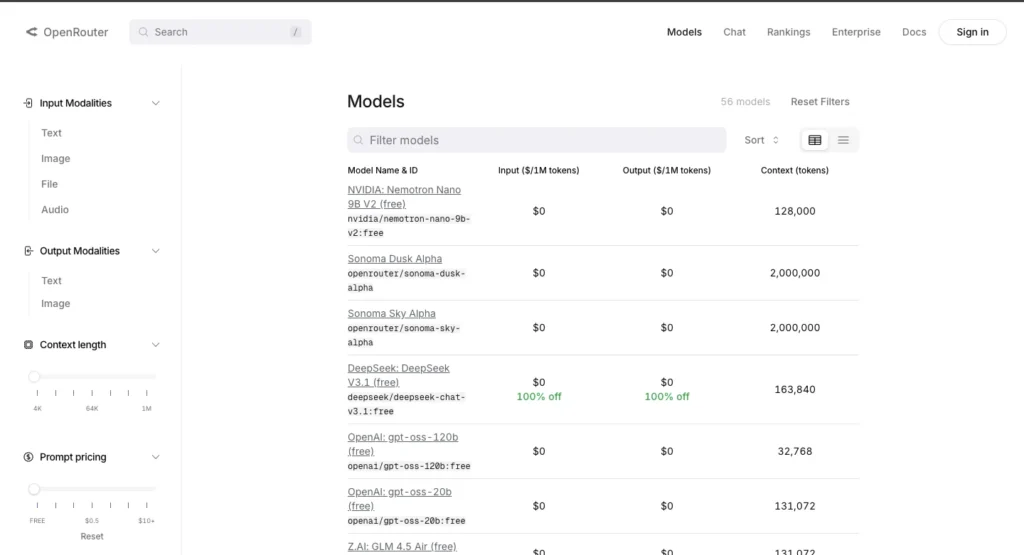
1. OpenRouter – The Model Aggregator
OpenRouter has become my go-to platform for model experimentation. They offer access to 50+ models through a single API, including DeepSeek R1, Llama 4 variants, and GPT-OSS models.
What Makes It Special: Instead of managing multiple provider accounts, you get one API key for dozens of models.
The free tier offers 20 requests/minute and 50 requests/day, jumping to 1000/day with a $10 lifetime credit.
Real Performance: I’ve run thousands of requests through OpenRouter with impressive reliability.
Response times vary by model, but infrastructure handles traffic spikes well. The newer models like DeepSeek R1 excel at coding tasks.
Best For: Model comparison, prototyping, educational projects, and applications needing model flexibility.
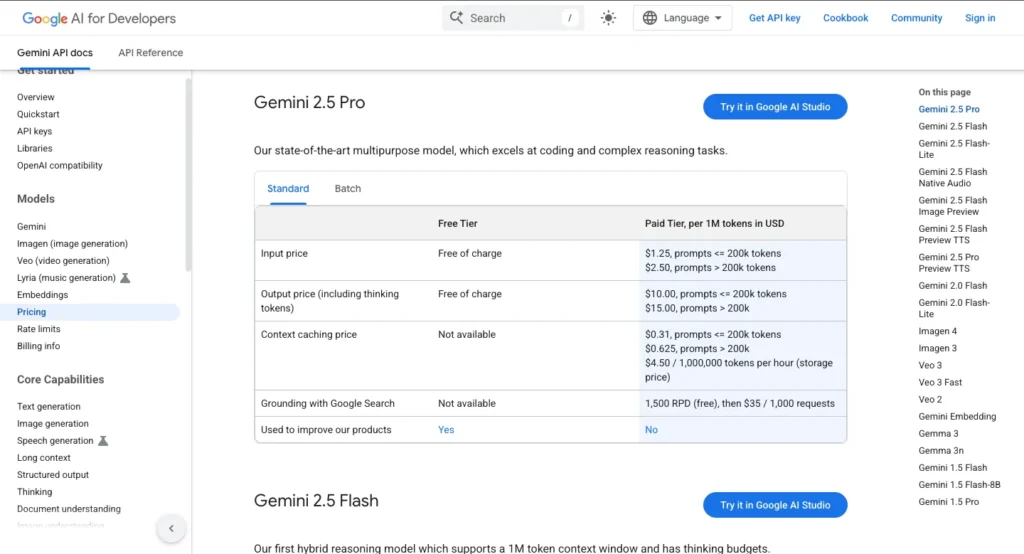
2. Google AI Studio – The High-Volume Champion
Google AI Studio offers some of the industry’s most generous free tiers.
With up to 3 million tokens daily for Gemini 2.5 Pro and substantial limits across their model family, it’s unbeatable for high-volume development.
Why It Stands Out: The token allowances are genuinely impressive. I’ve used Google AI Studio for content generation projects that would cost hundreds elsewhere.
Gemini models excel at multimodal tasks, handling text, images, and code equally well.
The Caveat: Google uses your data for training unless you’re in specific regions (UK, Switzerland, EEA, EU). For commercial applications with sensitive data, review their policies carefully.
Best For: High-volume content generation, multimodal applications, rapid prototyping with generous limits.
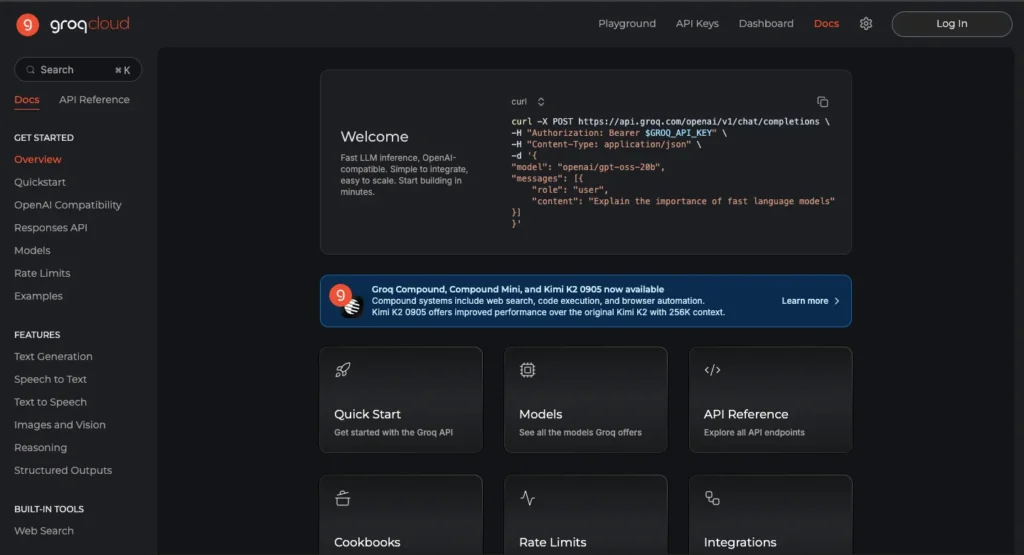
3. Groq – The Speed Leader
If you haven’t experienced Groq‘s inference speed, you’re missing out. This platform delivers responses so fast it changes how you think about real-time AI applications.
The Speed Difference: Where other providers take 2-3 seconds, Groq often delivers under 500 milliseconds. I built a real-time coding assistant using Groq that felt like pair programming with a human.
Model Selection: Llama 3.1 8B provides 14,400 requests/day, while Llama 3.3 70B offers 1,000 requests/day. The trade-off between capability and volume requires consideration based on your needs.
Best For: Real-time chatbots, code assistance tools, interactive applications where response time is critical.
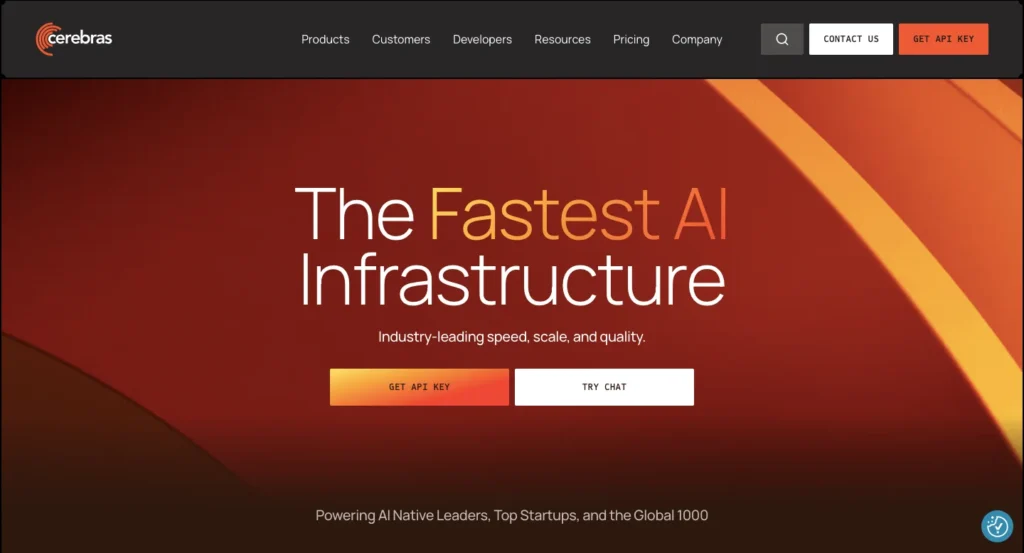
4. Cerebras – The Performance King
Cerebras quietly built one of the industry’s most impressive free tiers, balancing enterprise-grade capability with accessibility.
Their 1 million tokens daily and consistent performance make them ideal for serious development work.
Technical Excellence: Models run consistently and handle complex queries well. I used Cerebras for a research project requiring document analysis, and the quality was consistently high across months of testing.
Reliability Factor: What impressed me most is consistency. Minimal downtime and steady response quality make it suitable for applications that can’t afford service interruptions.
Best For: Document analysis, complex reasoning tasks, code generation, research applications requiring reliable performance.

5. Mistral La Plateforme – The European Choice
Mistral combines powerful models with European data handling standards.
The free tier requires phone verification but provides 1 billion tokens monthly, genuinely impressive for serious development.
GDPR Advantage: For European developers or companies handling EU data, Mistral’s compliance is crucial. They don’t use your data for training by default, and infrastructure meets European standards.
Model Performance: Mistral’s models, particularly Small 3.1 variants, excel at multilingual applications and nuanced reasoning. Their separate Codestral offering provides 2,000 daily requests for code tasks.
Best For: European businesses requiring compliance, multilingual applications, privacy-conscious development, substantial long-term projects.
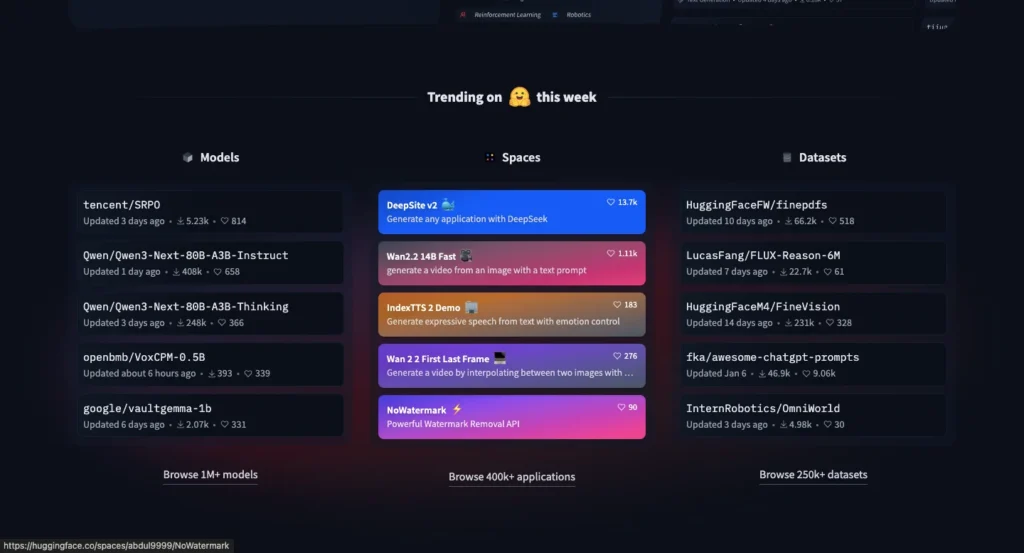
6. HuggingFace Inference – The Research Hub
HuggingFace democratizes AI by offering access to thousands of community models through Serverless Inference. The $0.10 monthly credit goes further than expected for experimentation.
Community Advantage: Access to models you won’t find elsewhere, specialized fine-tuned variants, experimental architectures, and domain-specific implementations. The serverless approach handles hosting automatically.
Smart Usage: Success requires understanding which models provide the best value. Smaller, specialized models often deliver better results per dollar than larger general-purpose ones.
Best For: Research and experimentation, testing specialized models, domain-specific applications, learning new architectures.
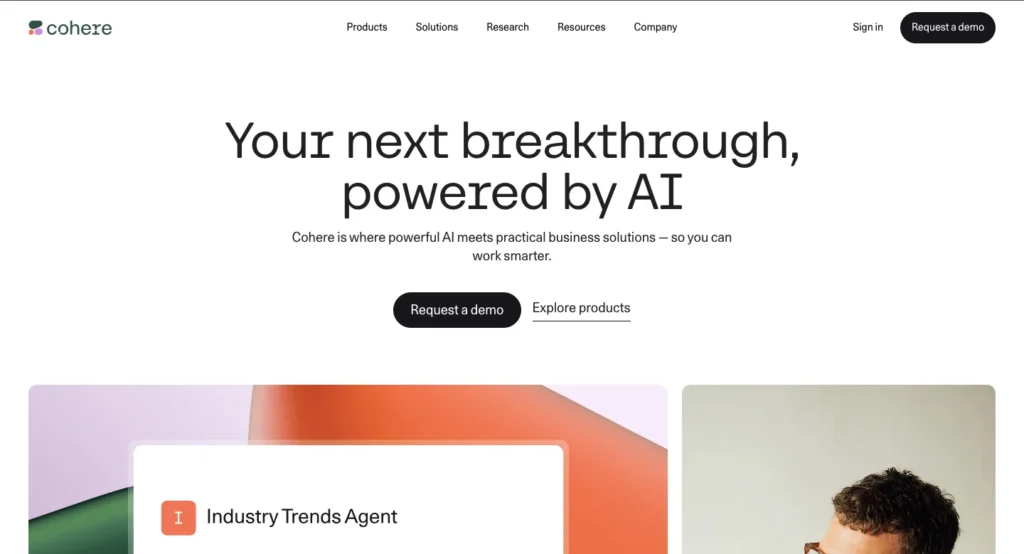
7. Cohere – The Enterprise Option
Cohere offers production-quality APIs with excellent documentation and reliable performance. The 20 requests/minute and 1,000 monthly requests are restrictive, but quality makes it worthwhile for specific use cases.
Production Quality: The API design feels enterprise-ready with comprehensive documentation and consistent response formats. I’ve built several production applications using their APIs successfully.
Business Focus: Command models excel at business tasks like summarization and analysis. The multilingual capabilities are impressive, and embedding models are among the best in any free tier.
Best For: Business applications requiring reliability, multilingual products, semantic search systems, professional content generation.
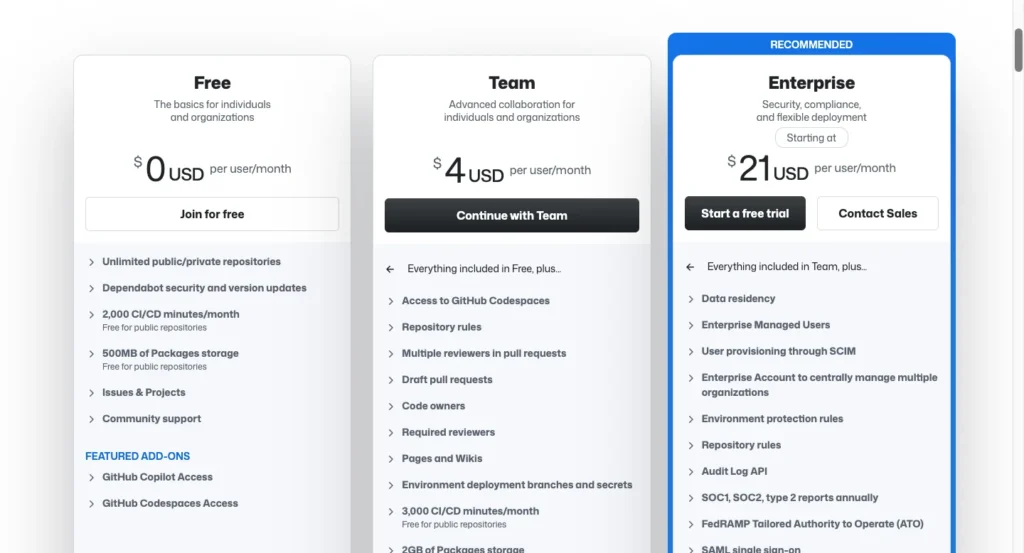
8. GitHub Models – The Developer Ecosystem
GitHub Models provides access to cutting-edge models including GPT-5 and Claude variants. Access depends on your GitHub Copilot subscription tier, but integration with existing workflows creates powerful synergies.
Cutting-Edge Access: The model selection is remarkable, GPT-5, various Claude models, and other premium APIs through a single interface. Perfect for comparing model families within existing development workflows.
Ecosystem Integration: For developers already using GitHub and Copilot, the seamless authentication and consistent API patterns create significant workflow advantages.
Best For: Developers using GitHub Copilot, applications integrating with GitHub’s ecosystem, experimentation with latest models.
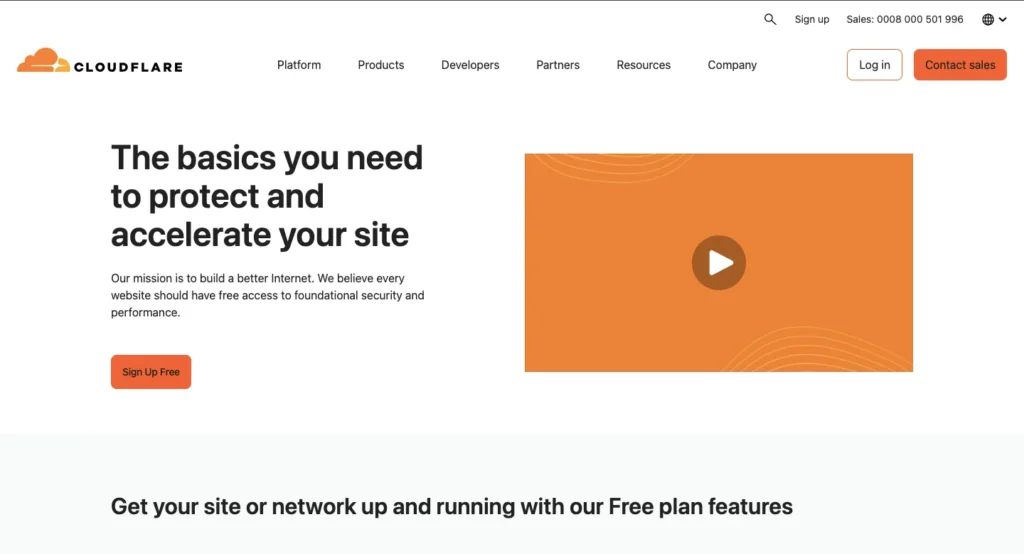
9. Cloudflare Workers AI – The Edge Computing Solution
Cloudflare Workers AI brings inference to the edge through their global network. The 10,000 neurons daily translates to substantial usage, with the unique advantage of low-latency global deployment.
Edge Network Benefits: Instead of routing to distant data centers, Workers AI runs models close to users. I’ve deployed applications with noticeably faster response times and consistent global performance.
Serverless Integration: Integration with Cloudflare Workers creates possibilities for serverless applications that scale automatically and run close to users without infrastructure management.
Best For: Global applications requiring low latency, edge computing scenarios, serverless AI applications, real-time processing.

10. Together AI – The Innovation Platform
Together AI focuses on cutting-edge research models and experimental architectures. The 60 requests/minute free tier provides access to innovative approaches before they become mainstream.
Research Focus: Often provides early access to new architectures and research releases. I’ve experimented with models here that later became popular elsewhere.
Developer Experience: Built by developers for developers with thorough documentation, helpful error messages, and clear communication about model status (experimental, deprecated, production-ready).
Best For: Research applications, early access to cutting-edge models, learning new architectures, community-focused development.
Quick Comparison & Recommendations
For High Volume: Google AI Studio wins with massive token allowances. Cerebras provides excellent daily limits with consistent performance.
For Real-Time: Groq dominates with unmatched speed. Cloudflare Workers AI offers best global edge performance.
For Experimentation: OpenRouter provides the best model variety. HuggingFace offers unique community models.
For Production: Cohere and Google AI Studio deliver the most consistent uptime and reliability.
For Europe: Mistral is the clear GDPR-compliant choice.
For Developers: GitHub Models integrates best with existing workflows for GitHub users.
Match providers to your specific needs, rate limits vs usage patterns, model capabilities vs task requirements, reliability needs vs experimental features.
Best Practices & Common Pitfalls
Essential Practices: Implement client-side rate limiting more conservative than provider limits. Build fallback systems, never rely on single free APIs for critical applications.
Monitor usage carefully across all providers. Respect services to maintain access for everyone.
Avoid These Mistakes: Don’t send requests too quickly even within limits. Some providers require payment methods and charge overages, understand billing structures.
Review privacy policies for sensitive data applications. Plan for growth with paid tier migration strategies.
Success Strategy: Start with 1-2 providers matching immediate needs, implement proper monitoring and fallbacks, always respect the services making this access possible.
The AI development landscape has never been more accessible. These free APIs democratize advanced capabilities, but success requires understanding each service’s strengths while building responsibly for the community that makes this ecosystem possible.
Also Read:
